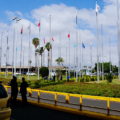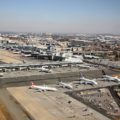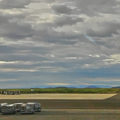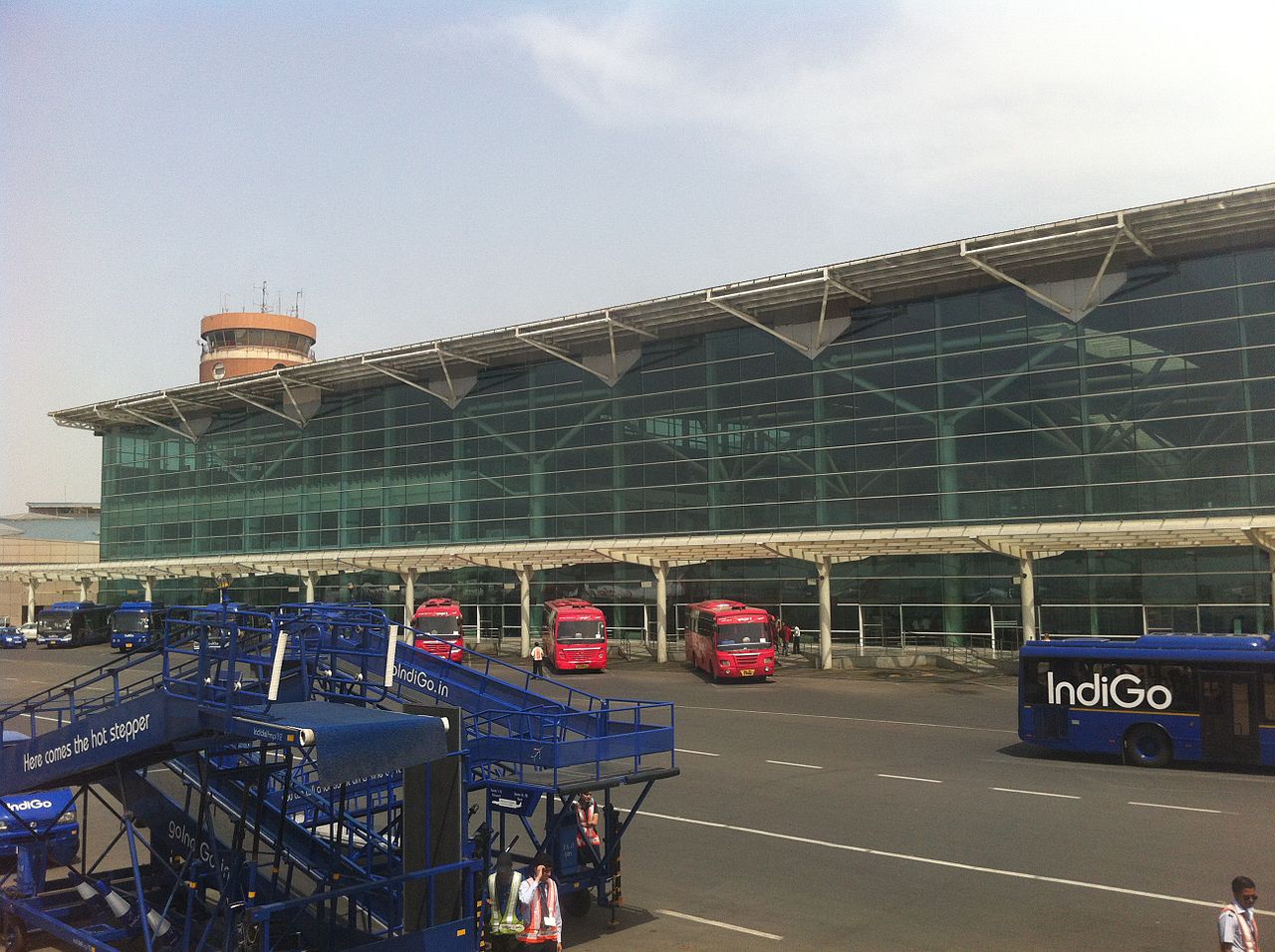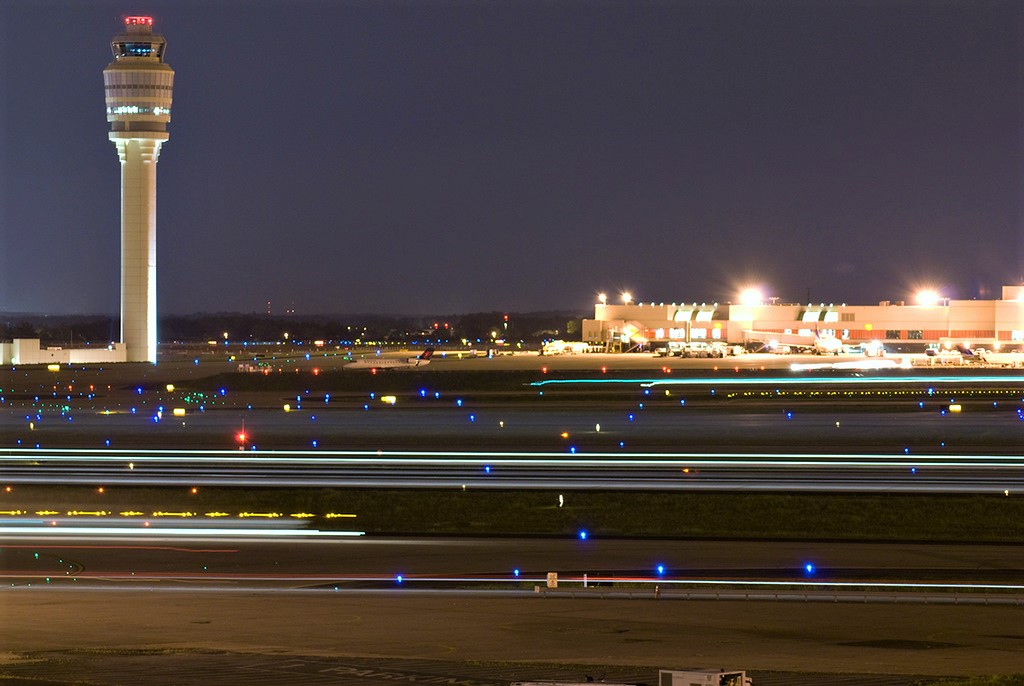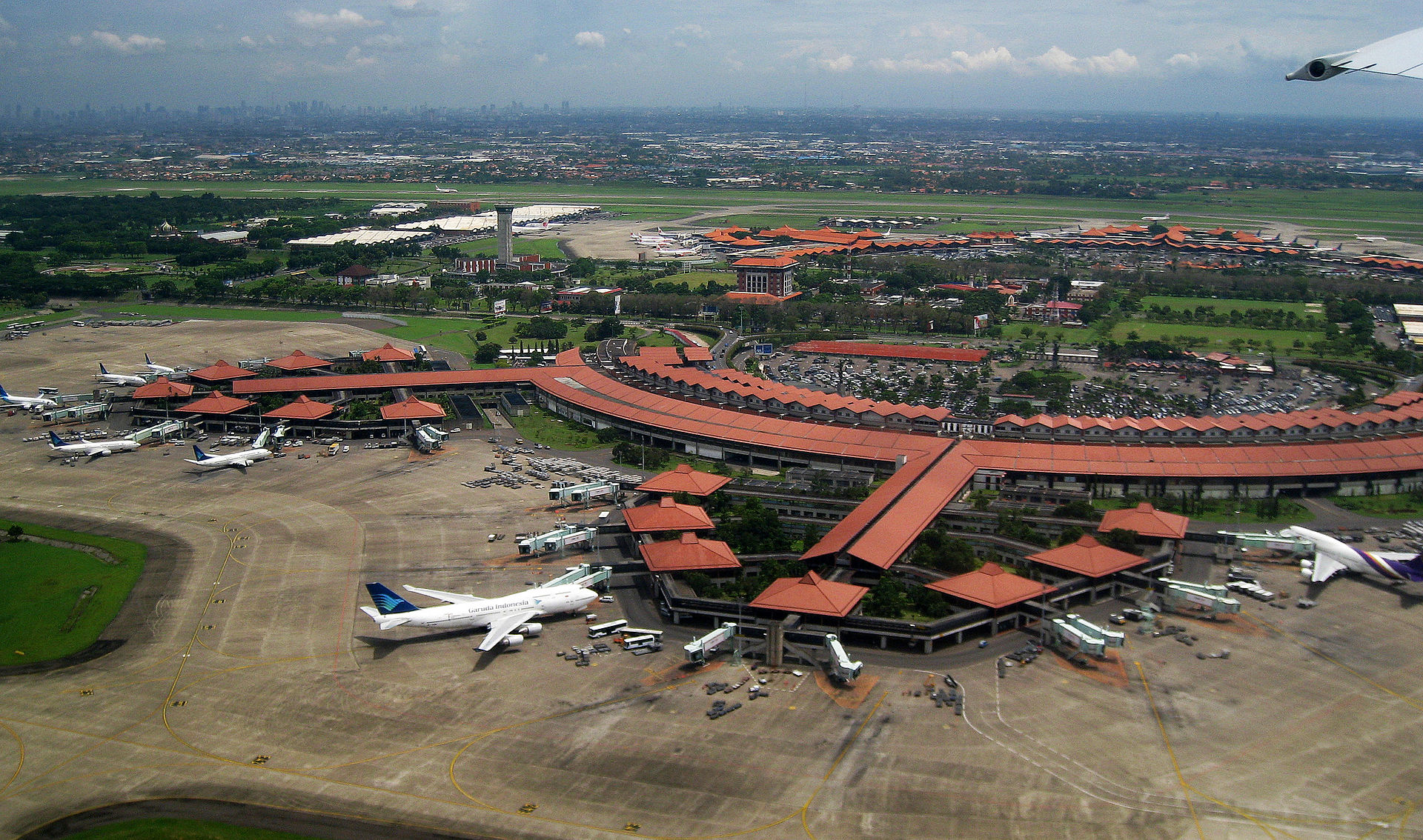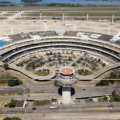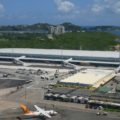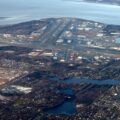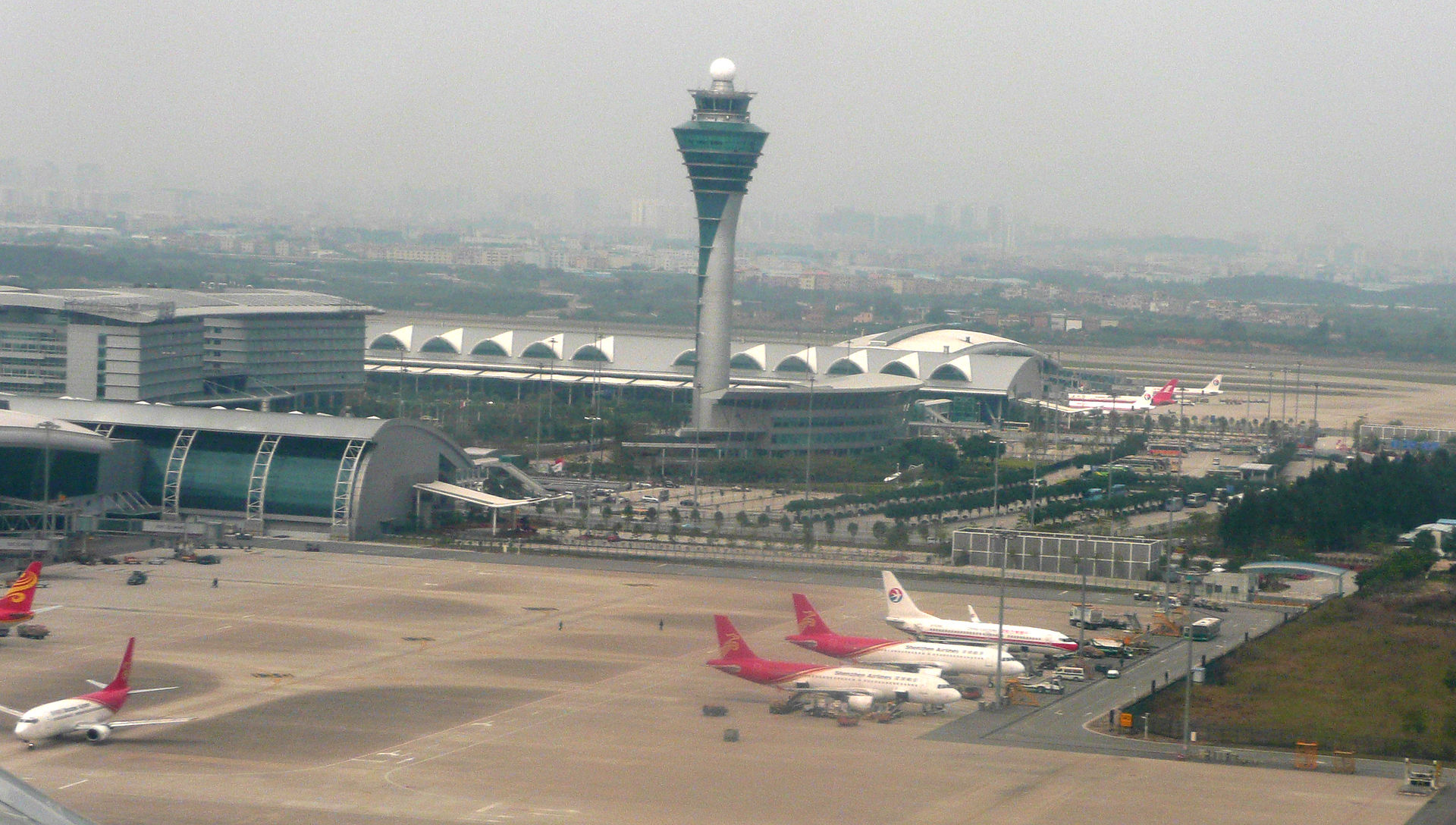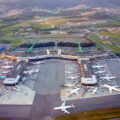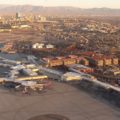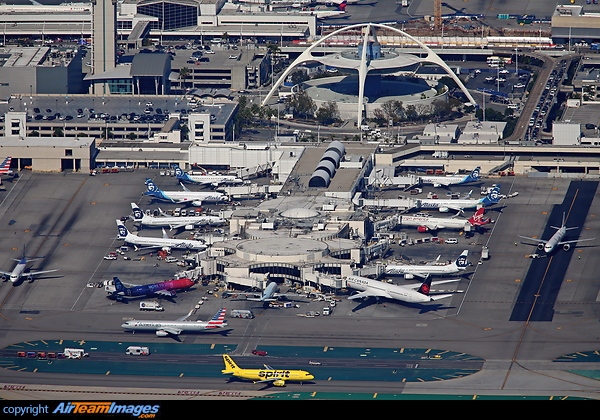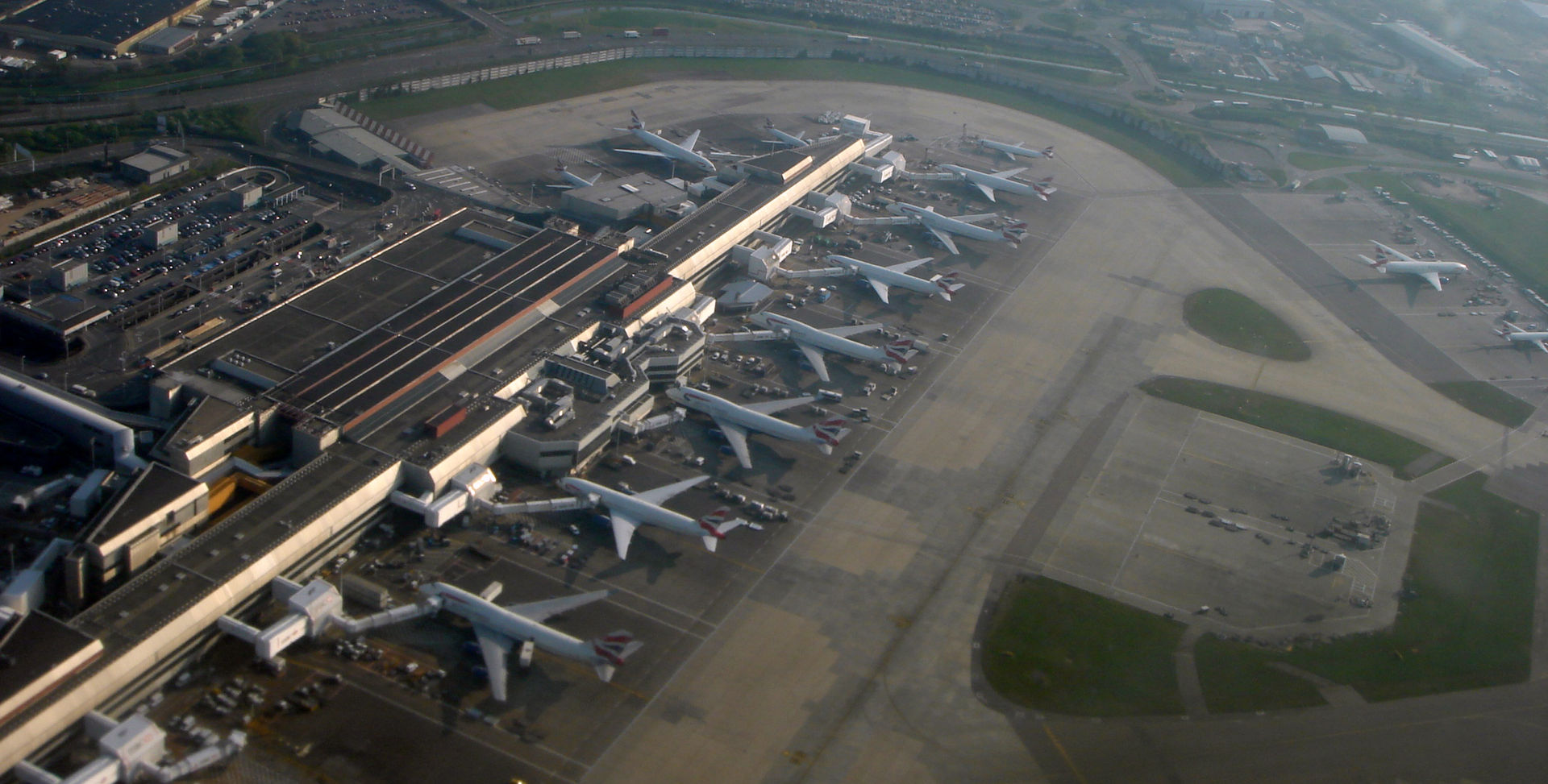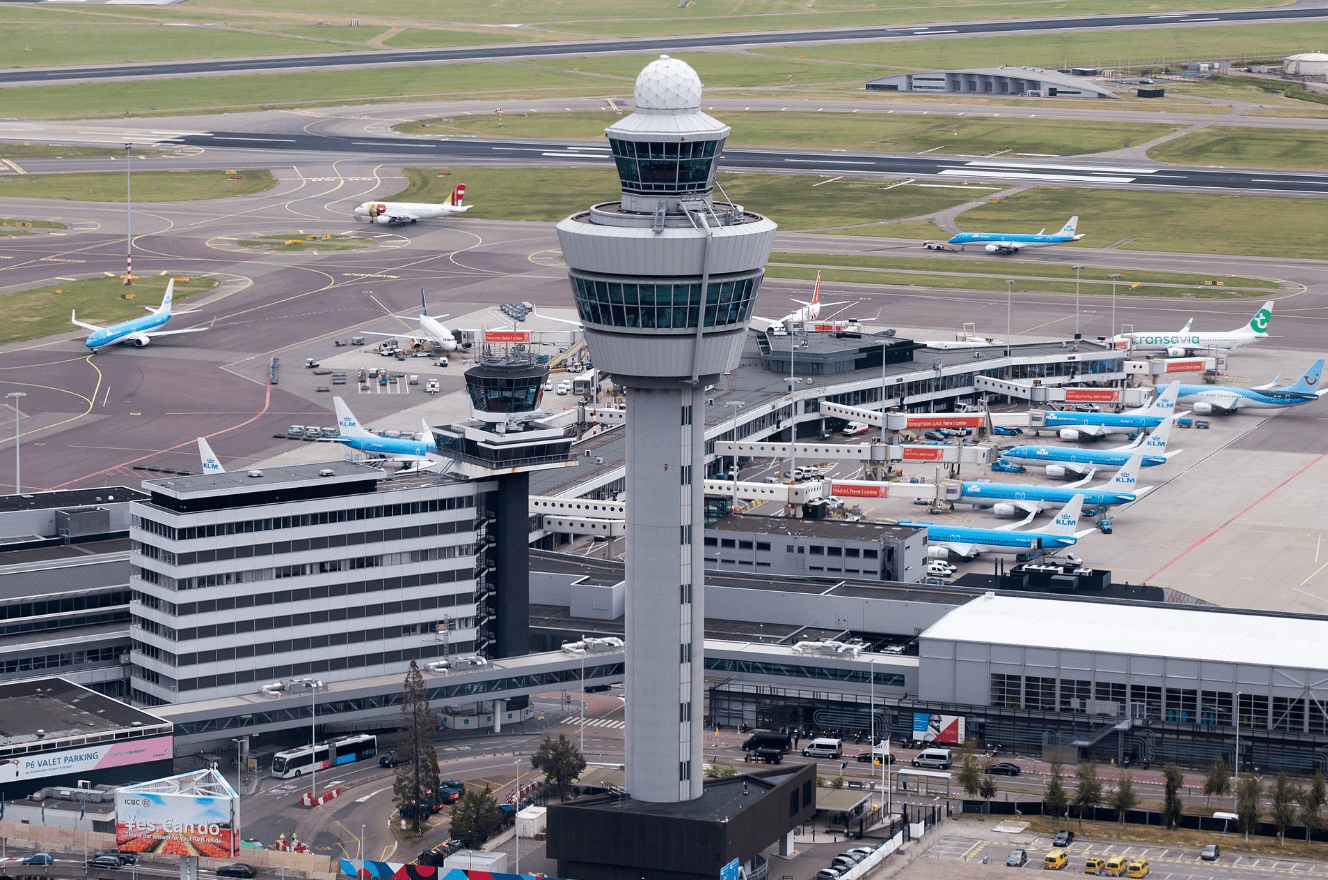Aviation
Sydney Airport
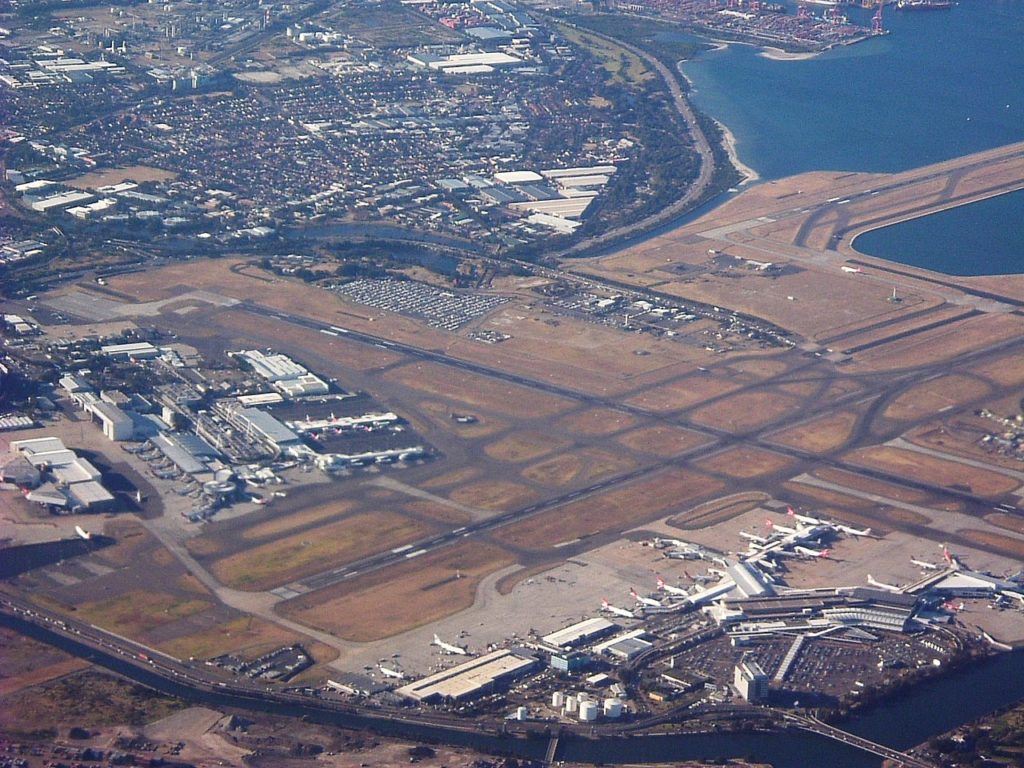
Source: Mathieumcguire.
IATA: SYD ICAO: YSSY WMO: 94767 | |
| Airport type | Public |
| Owner | Leased Commonwealth Airport |
| Operator | Sydney Airport Corporation Limited |
| Serves | Sydney |
| Location | Mascot, New South Wales, Australia |
| Hub for | Qantas Regional Express Airlines Virgin Australia Jetstar Airways Tigerair Australia |
| Focus city for | Air New Zealand |
| Elevation AMSL | 21 ft / 6 m |
| Coordinates | |
| Website | sydneyairport.com.au |
Sydney (Kingsford Smith) Airport (colloquially Mascot Airport, Kingsford Smith Airport, or Sydney Airport; IATA: SYD, ICAO: YSSY; ASX: SYD) is an international airport in Sydney, Australia located 8 km (5 mi) south of the Sydney city centre, in the suburb of Mascot. The airport is owned by the ASX-listed Sydney Airport Group. It is the primary airport serving Sydney, and is a primary hub for Qantas, as well as a secondary hub for Virgin Australia and Jetstar Airways, as well as a focus city for Air New Zealand. Situated next to Botany Bay, the airport has three runways, colloquially known as the east–west, north–south and third runways.
Sydney Airport is one of the world’s longest continuously operated commercial airports and the busiest airport in Australia, handling 42.6 million passengers and 348,904 aircraft movements in 2016–17. It was the 38th busiest airport in the world in 2016. Currently 46 domestic and 43 international destinations are served to Sydney directly.
In 2018, the airport was rated in the top five worldwide for airports handling 40–50 million passengers annually and was overall voted the 20th best airport in the world at the Skytrax World Airport Awards.
The airport’s Air Traffic Control Tower is listed on the Commonwealth Heritage List.
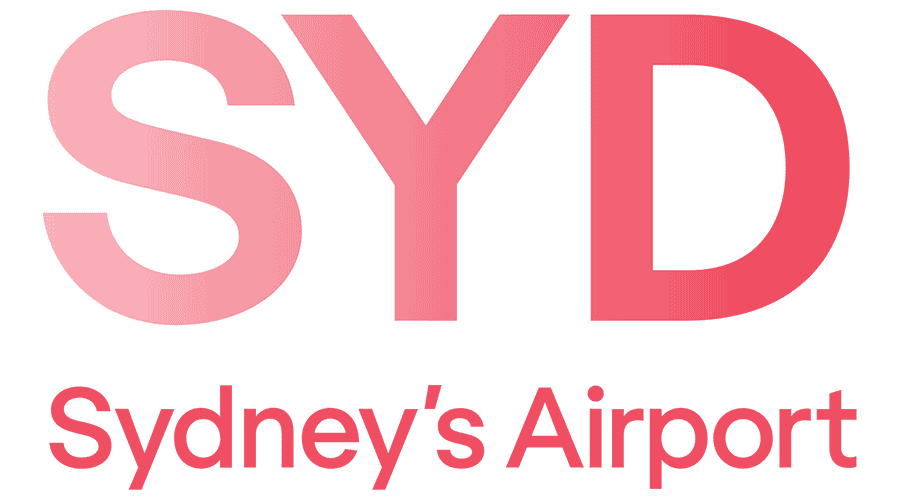

Expansion
In 2002, the Commonwealth Government sold Sydney Airports Corporation Limited (later renamed Sydney Airport Corporation Limited, SACL), the management authority for the airport, to Southern Cross Airports Corporation Holdings Ltd. 82.93 per cent of SACL is owned by MAp Airports International Limited, a subsidiary of Macquarie Bank, Sydney Airport Intervest GmbH own 12.11 per cent and Ontario Teachers’ Australia Trust own 4.96 per cent. SACL holds a 99-year lease on the airport which remains Crown land and as such is categorised as a Leased Federal Airport.
Since the international terminal’s original completion, it has undergone two large expansions. One such expansion is underway and will stretch over twenty years (2005–25). This will include an additional high-rise office block, the construction of a multi-level car park, the expansion of both international and domestic terminals. These expansions—and other plans and policies by Macquarie Bank for airport operations—are seen as controversial, as they are performed without the legal oversight of local councils, which usually act as the local planning authority for such developments. As of April 2006, some of the proposed development has been scaled back.
Sydney Airport’s International terminal underwent a $500 million renovation that was completed in mid-2010. The upgrade includes a new baggage system, an extra 7,300 m2 (78,577 sq ft) of space for shops and passenger waiting areas and other improvements.
In March 2010, the Australian Competition and Consumer Commission released a report sharply critical of price gouging at Sydney airport, ranking it fifth out of five airports. The report noted Sydney Airport recorded the highest average prices at $13.63 per passenger, compared to the lowest of $7.96 at Melbourne Airport, while the price of short-term parking had almost doubled in the 2008–09 financial year, from $28 to $50 for four hours. The report also accused the airport of abusing its monopoly power.
Future
In December 2011, Sydney Airport announced a proposal to divide the airport into two airline-alliance-based precincts; integrating international, domestic and regional services under the one roof by 2019. The current domestic Terminal 2 and Terminal 3 would be used by Qantas, Jetstar and members of the oneworld airline alliance while today’s international Terminal 1 would be used by Virgin Australia and its international partners. Other international airlines would continue to operate from T1.
In September 2012, Sydney Airport and MD CEO Kerrie Mather announced the airport had abandoned the proposal to create alliance-based terminals in favour of terminals “based around specific airline requirements and (passenger) transfer flows”. She stated the plan was to minimise the number of passengers transferring between terminals. In June 2013 the airport released a draft version of its 2013 Masterplan, which proposes operating domestic and international flights from the same terminals using ‘swing gates’, along with upgrading Terminal 3 (currently the Qantas domestic terminal) to accommodate the Airbus A380.
On 17 February 2014, the Australian Government approved Sydney Airport’s Master Plan 2033, which outlines the airport’s plans to cater for forecast demand of 74 million passengers in 2033. The plan includes Sydney Airport’s first ever integrated ground transport plan.
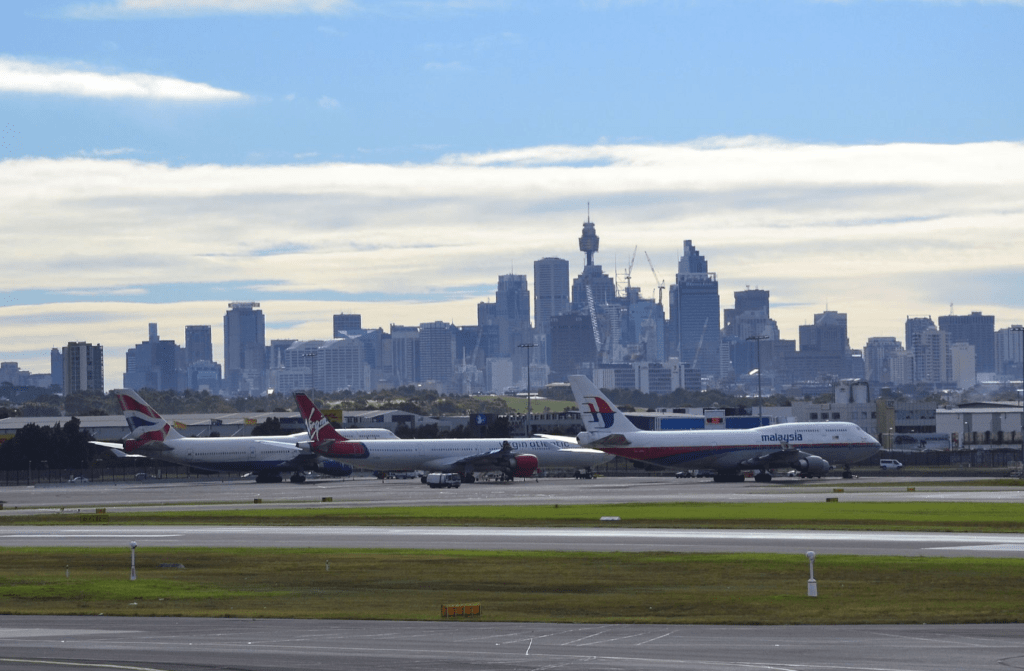

Source: Sydney Airport
Terminals


Source: CellarDoor85
Sydney Airport has three passenger terminals. The International Terminal is separated from the other two by a runway; therefore, connecting passengers need to allow for longer transfer times.
Terminal 1
Terminal 1 was opened on 3 May 1970, replacing the old Overseas Passenger Terminal (which was located where Terminal 3 stands now) and has been greatly expanded since then. Today it is known as the International Terminal, located in the airport’s north western sector. It has 25 gates (thirteen in concourse B numbered 8–37, and twelve in concourse C numbered 50–63) served by aerobridges. Pier B is used by Qantas, all Oneworld members and all Skyteam members (except Delta). Pier C is used by Virgin Australia and its partners (including Delta) as well as all Star Alliance members. There are also a number of remote bays which are heavily utilised during peak periods and for parking of idle aircraft during the day.
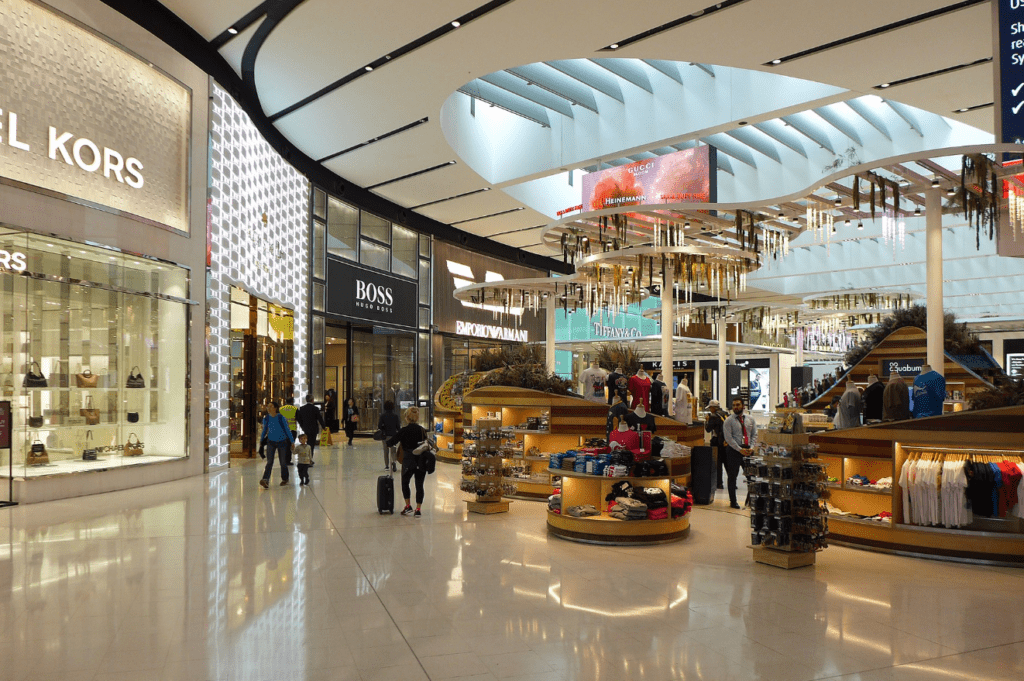

Source: Wpcpey
The terminal building is split into three levels, one each for arrivals, departures and airline offices. The departure level has 20 rows of check-in desks each with 10 single desks making a total of 200 check-in desks. The terminal hosts eight airline lounges: two for Qantas, and one each for Etihad Airways, Air New Zealand, Singapore Airlines, Emirates, American Express and SkyTeam. The terminal underwent a major $500 million redevelopment that was completed in 2010, by which the shopping complex was expanded, outbound customs operations were centralised and the floor space of the terminal increased to 254,000 square metres (2,730,000 sq ft). Further renovations began in 2015 with a reconfiguration and decluttering of outbound and inbound duty-free areas, extension of the airside dining areas and installation of Australian Border Force outbound immigration SmartGates. These works were completed in 2016.
Terminal 2
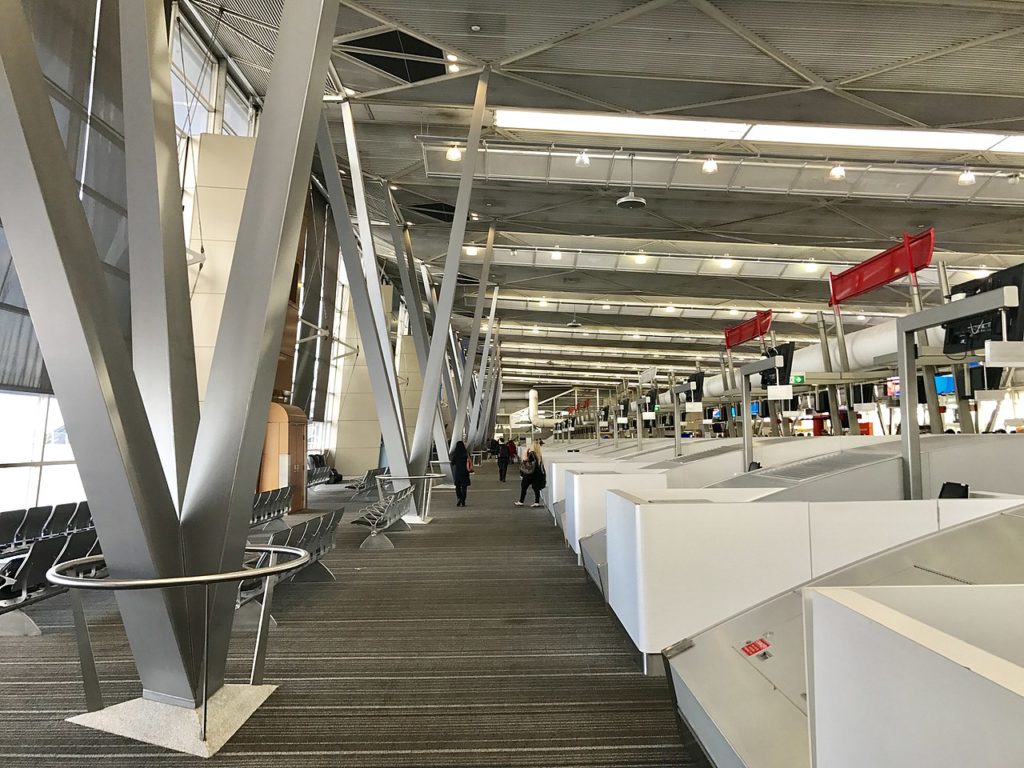

Source: Kgbo
Terminal 2, located in the airport’s north-eastern section, was the former home of Ansett Australia’s domestic operations. It features 16 parking bays served by aerobridges and several remote bays for regional aircraft. It serves FlyPelican, Jetstar, Regional Express Airlines, Tigerair Australia and Virgin Australia. There are lounges for Regional Express Airlines and Virgin Australia.
Terminal 3
Terminal 3 is a domestic terminal, serving Qantas with QantasLink flights having moved their operations from Terminal 2 to Terminal 3 on 16 August 2013. Originally, it was home for Trans Australia Airlines (later named Australian Airlines). Like Terminal 2 it is located in the north-eastern section.
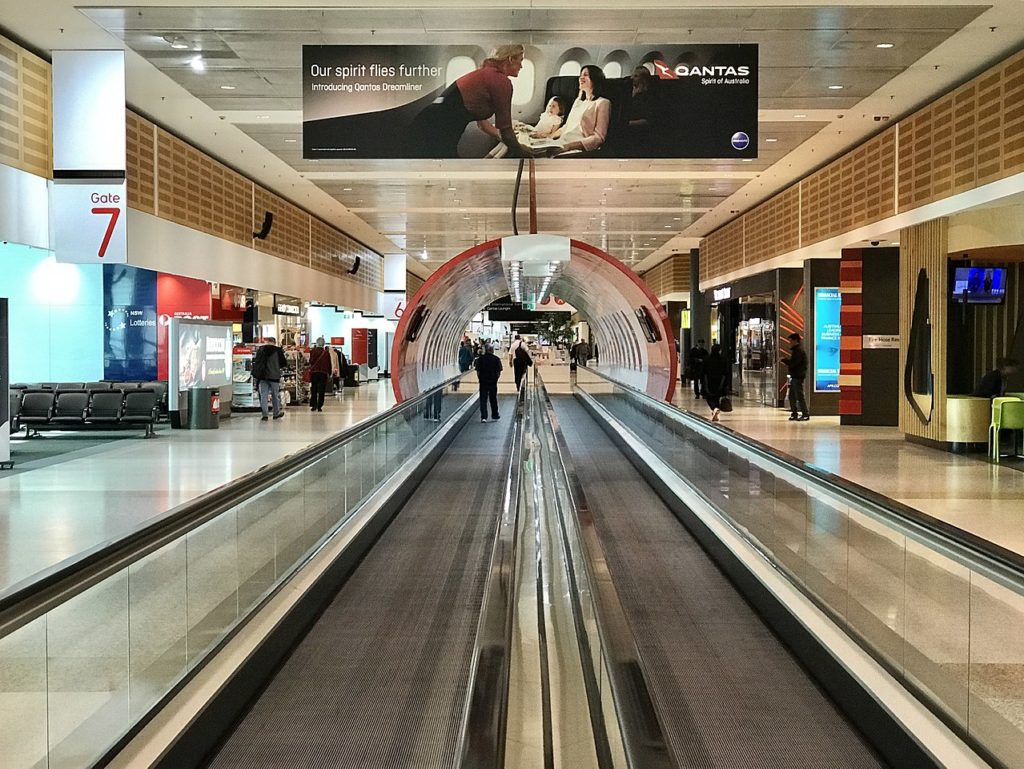

Source: Kgbo
The current terminal building is largely the result of extensions designed by Hassell that were completed in 1999. This included construction of a 60-metre roof span above a new column-free checkin hall and resulted in extending the terminal footprint to 80,000 square metres. There are 14 parking bays served by aerobridges, including two served by dual aerobridges. Terminal 3 features a large Qantas Club lounge, along with a dedicated Business Class and Chairmans lounge. Terminal 3 also has a ‘Heritage Collection’ located adjacent to gate 13, dedicated to Qantas and including many collections from the airline’s 90-plus years of service. It also has a view of the airport’s apron and is used commonly by plane-spotters.
Qantas sold its lease of Terminal 3, which was due to continue until 2019, back to Sydney Airport for $535 million. This means Sydney Airport resumes operational responsibility of the terminal, including the lucrative retail areas.
Freight Terminals
The airport is a major hub for freight transport to and from Australia handling approx. 45 percent of the national cargo traffic. Therefore, it is equipped with extensive freight facilities including seven dedicated cargo terminals operated by several handlers.
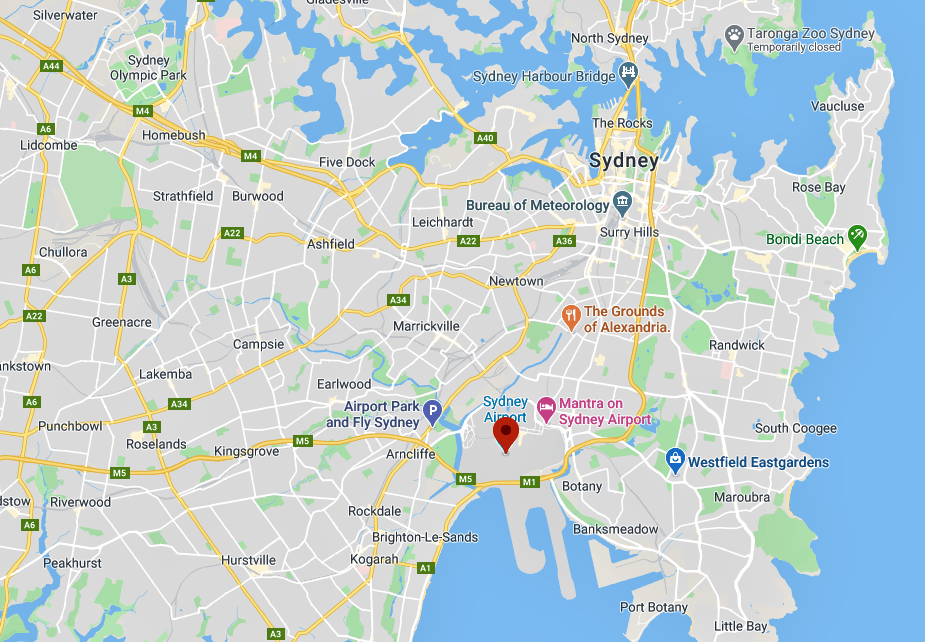

Airlines and destinations
Passenger
| Airlines | Destinations |
|---|---|
| Air Canada | Toronto–Pearson, Vancouver |
| Air China | Beijing–Capital,Chengdu |
| Air India | Delhi |
| Air New Zealand | Auckland, Christchurch, Norfolk Island, Queenstown, Rarotonga, Wellington |
| Air Niugini | Port Moresby |
| Air Vanuatu | Port Vila |
| AirAsia X | Kuala Lumpur–International |
| Aircalin | Nouméa |
| All Nippon Airways | Tokyo–Haneda |
| American Airlines | Los Angeles |
| Asiana Airlines | Seoul–Incheon |
| Beijing Capital Airlines | Qingdao |
| British Airways | London–Heathrow, Singapore |
| Cathay Pacific | Hong Kong |
| Cebu Pacific | Manila |
| China Airlines | Taipei–Taoyuan |
| China Eastern Airlines | Beijing–Capital, Kunming, Nanjing, Shanghai–Pudong, Wuhan, Xi’an |
| China Southern Airlines | Guangzhou, Shenzhen |
| Delta Air Lines | Los Angeles |
| Emirates | Christchurch, Dubai–International |
| Etihad Airways | Abu Dhabi |
| Fiji Airways | Nadi, Suva |
| Fly Corporate | Brisbane, Inverell, Narrabri |
| FlyPelican | Cobar, Mudgee, Taree |
| Garuda Indonesia | Denpasar, Jakarta–Soekarno-Hatta, |
| Hainan Airlines | Changsha, Haikou |
| Hawaiian Airlines | Honolulu |
| Japan Airlines | Tokyo-Haneda |
| Jetstar Airways | Adelaide, Auckland, Avalon, Ayers Rock, Ballina, Brisbane, Cairns, Darwin, Denpasar, Gold Coast, Hamilton Island, Hobart, Honolulu, Ho Chi Minh City, Launceston, Melbourne, Nadi, Perth, Phuket, Proserpine, Queenstown, Sunshine Coast, Townsville |
| Korean Air | Seoul–Incheon |
| LATAM Chile | Auckland, Santiago de Chile |
| Malaysia Airlines | Kuala Lumpur–International |
| Malindo Air | Denpasar, Kuala Lumpur–International |
| Philippine Airlines | Manila |
| Qantas | Adelaide, Alice Springs, Auckland, Bangkok–Suvarnabhumi, Brisbane, Cairns, Canberra, Christchurch, Dallas/Fort Worth, Darwin, Denpasar, Gold Coast, Hamilton Island, Hobart, Hong Kong, Honolulu, Jakarta–Soekarno-Hatta, Johannesburg–OR Tambo, Los Angeles, London–Heathrow, Manila, Melbourne, Nadi, Nouméa, Osaka–Kansai, Perth, Queenstown, San Francisco, Santiago de Chile, Shanghai–Pudong, Singapore, Tokyo–Haneda, Wellington Seasonal: Broome, Sapporo–Chitose, Vancouver |
| QantasLink | Albury, Armidale, Ballina, Bendigo, Canberra, Coffs Harbour, Dubbo, Gold Coast, Hamilton Island, Hobart, Lord Howe Island, Mildura, Moree, Orange Port Macquarie, Sunshine Coast, Tamworth, Toowoomba Wellcamp, Wagga Wagga |
| Qatar Airways | Doha |
| Regional Express Airlines | Albury, Armidale, Ballina, Bathurst, Broken Hill, Cooma, Dubbo, Grafton, Griffith, Lismore, Merimbula, Moruya, Narrandera, Newcastle, Orange, Parkes, Wagga Wagga |
| Samoa Airways | Apia–Faleolo |
| Scoot | Singapore |
| Sichuan Airlines | Chongqing, Ürümqi |
| Singapore Airlines | Singapore |
| Thai Airways | Bangkok–Suvarnabhumi |
| Tianjin Airlines | Tianjin, Zhengzhou |
| Tigerair Australia | Brisbane, Gold Coast, Melbourne, Perth |
| United Airlines | Houston–Intercontinental Los Angeles San Francisco |
| Vietnam Airlines | Hanoi, Ho Chi Minh City |
| Virgin Australia | Adelaide, Albury, Apia–Faleolo, Auckland, Ayers Rock, Ballina, Brisbane, Cairns, Canberra, Coffs Harbour, Darwin, Denpasar, Gold Coast, Hamilton Island, Hervey Bay, Hobart, Launceston, Los Angeles, Melbourne, Nadi, Nuku’alofa, Perth, Port Macquarie, Queenstown, Sunshine Coast, Tamworth, Townsville, Wellington |
| XiamenAir | Xiamen |
Cargo
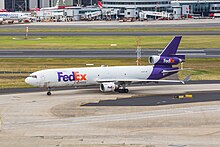

cargo terminal at Sydney Airport; Terminal 3 is in the background
Source: Vismay Bhadra


of Qantas Freight, on short finals for Sydney Airport
Source: Vismay Bhadra
| Airlines | Destinations |
|---|---|
| Airwork | Auckland |
| Cathay Pacific Cargo | Hong Kong, Melbourne |
| DHL Aviation | Auckland, Brisbane, Cairns, Cincinnati, Los Angeles, Honolulu, Melbourne, Nouméa |
| Emirates SkyCargo | Dubai–Al Maktoum, Hong Kong, Singapore |
| FedEx Express | Auckland, Guangzhou, Honolulu, Los Angeles, Manila, Singapore |
| MASkargo | Da Nang, Kuala Lumpur–International |
| Polar Air Cargo | Honolulu, Melbourne |
| Qantas Freight | Auckland, Brisbane, Chicago–O’Hare, Chongqing, Christchurch, Hong Kong, Honolulu, Jakarta–Soekarno Hatta, Melbourne, Shanghai–Pudong |
| Singapore Airlines Cargo | Adelaide, Auckland, Melbourne, Singapore |
| Toll Priority | Brisbane, Melbourne |
| UPS Airlines | Honolulu, Seoul–Incheon, Shanghai–Pudong, Singapore |
| Virgin Australia Cargo | Brisbane, Cairns, Melbourne, Townsville |
Second Sydney airport
The local, state and federal governments have investigated the viability of building a second major airport in Sydney since the 1940s. Significant passenger growth at Sydney Airport indicates the potential need for a second airport – for example, total passenger numbers increased from less than 10 million in 1985–86 to over 25 million in 2000–01, and over 40 million in 2015–16. This growth is expected to continue, with Sydney region passenger demand forecast to reach 87 million passengers by 2035.
On 15 April 2014, the Federal Government announced that Badgerys Creek would be Sydney’s second international airport, to be known as Western Sydney Airport. Press releases suggest that the airport will not be subject to curfews and will open in phases, initially with a single airport runway and terminal. It would be linked to Sydney Airport by local roads and motorways, and by extensions to the existing suburban rail network. In May 2017 the Federal Government announced it would build (pay for) the second Sydney Airport, after the Sydney Airport Group declined the Government’s offer to build the second airport.
Access
Public transport


Source: MDRX
Domestic Airport Station on the Sydney Trains Airport & South Line
The airport is accessible via the Airport Link underground rail line. The International Airport railway station is located below the International terminal, while the Domestic Airport railway station is located under the car park between the domestic terminals (Terminal 2 and Terminal 3). While the stations are part of the Sydney Trains suburban network, they are privately owned and operated by the Airport Link consortium and their use is subject to a surcharge. The trains that service the airport are regular suburban trains. Unlike airport trains at some other airports, these do not have special provisions for customers with luggage, do not operate express to the airport and may have all seats occupied by commuters before the trains arrive at the airport.
State Transit operates route 400 from the airport to Bondi Junction railway station stopping at both the International and Domestic terminals and Mascot railway station. This route connects to the eastern suburbs while Transit Systems Sydney operates route 420 from Westfield Eastgardens to Burwood via both International and Domestic terminals, as well as Banksia and Rockdale railway stations.
You can walk to both the International and Domestic Airports to avoid the station surcharge. For the Domestic Airport alight at Mascot Railway Station it is 1.6km and takes around 20 minutes. For the International Airport you can walk from either Wolli Creek or Tempe Railway station. The walk from Wolli Creek is closest and is 1.8 km and takes less than 25 minutes.
Road access


Source: MDRX
Sydney Airport has road connections in all directions. Southern Cross Drive (M1), a motorway, is the fastest link with the city centre. The M5 South Western Motorway (including the M5 East Freeway) links the airport with the south-western suburbs of Sydney. A ring road runs around the airport consisting of Airport Drive, Qantas Drive, General Holmes Drive, M5 East Freeway and Marsh Street. General Holmes Drive features a tunnel under the main north-south runway and three taxiways as well as providing access to an aircraft viewing area. Inside the airport a part-ring road – Ross Smith Avenue (named after Ross MacPherson Smith) – connects the Domestic Terminal with the control tower, the general aviation area, car-rental company storage yards, long-term car park, heliport, various retail operations and a hotel. A perimeter road runs inside the secured area for authorised vehicles only.
The Airport runs several official car parks—Domestic Short Term, Domestic Remote Long Term, and International Short/Long Term.
The International Terminal is located beside a wide pedestrian and bicycle path. It links Mascot and Sydney City in the north-east with Tempe (via a foot bridge over Alexandra Canal) and Botany Bay to the south-west. All terminals offer bicycle racks and are also easily accessible by foot from nearby areas.
Accidents and incidents
- On 10 September 1920, Arthur Herbert Tattle of Wellington, New Zealand, was killed on the runway at Mascot when he was struck on the crown of his head by a plane taking off. He had come to see two friends take off on the plane and was standing on the runway in the flight path with a camera looking down at the viewfinder when he failed to notice the speed of the fast approaching plane, its height or the shouted warning from the pilot. He was driven to South Sydney Hospital where he died soon after from “a concussion of the brain”. An inquiry into the incident returned a finding of “accidental death” and was reported to be the first inquest in New South Wales resulting from an aeroplane accident.
- On 19 July 1945 a Consolidated C-87 Liberator Express operated by the Royal Air Force (RAF) bound for Manus Island failed to gain altitude after taking off from Sydney’s now non-existent runway 22, struck trees and crashed into Muddy Creek, north of Brighton-Le-Sands. The aircraft exploded on impact,killing all 12 passengers and crew on board. All the victims were service personnel, five from the RAF, one from the Royal New Zealand Air Force and six from the Royal Navy.
- On 18 June 1950 a Douglas DC-3 of Ansett Airways taxiing for take-off from runway 22 for a night-time passenger flight to Brisbane, hit and partially derailed a coal train travelling on the railway line that crossed the runway. Only the co-pilot was injured.
- On 30 November 1961, Ansett-ANA Flight 325, a Vickers Viscount, crashed into Botany Bay shortly after take-off. The starboard (right) wing failed after the aircraft flew into a thunderstorm. All 15 people on board were killed.
- On 1 December 1969, a Boeing 707-320B of Pan American World Airways registered N892PA and operating as Flight 812 overran the runway during take-off due to bird strikes. The accident investigation established that the aircraft struck a flock of seagulls, with a minimum of 11 individual bird strikes to the leading edges of the wings and engines 1, 2, and 3 (the two engines on the left wing and the inboard engine on the right wing). In particular, blade 14 of number 2 engine (the inboard engine on the left wing) was damaged by a single bird carcass and lost power before the decision to abandon the take-off (which occurred at or near V1 or takeoff decision speed). The aircraft came to rest 560 ft (170 m) beyond the end of runway 16 (now runway 16R). During the crash, number 2 engine hit the ground and was damaged. The nose and left main landing gears failed and the aircraft came to rest supported by engines 1 and 2, the nose, and the remainder of the main landing gear. There were no injuries or fatalities amongst the 125 passengers and 11 crew. The accident investigation concluded that the overrun was not inevitable.
- On 29 January 1971, a Boeing 727 of Trans Australia Airlines (registered VH-TJA) and taking off as Flight 592, struck the tail of a taxiing Douglas DC-8 of Canadian Pacific Air Lines (registered CF-CPQ) that had just landed as Flight 301. The DC-8 crew misinterpreted instructions on which exit to use after landing and backtracked along the runway instead of turning off it onto a taxiway; and the tower controller cleared the 727 for take-off in the mistaken belief that the runway was clear. The 727 crew saw the DC-8 during the take-off roll then proceeded with the take-off rather than take evasive measures. The 727 was damaged in the inboard right wing and the fuselage and lost pressure in one of its hydraulic systems but managed to return and land safely; a building on the ground was struck by parts of the 727’s starboard landing gear doors that fell off as it approached to land. The upper eight-and-a-half feet (about 2.6m) of the DC-8’s tail fin and a corresponding proportion of the rudder were torn off.
- On 21 February 1980, a Beechcraft Super King Air registered VH-AAV and operating Advance Airlines Flight 4210 took off from Sydney Airport and suffered an engine failure. The pilot flew the aircraft back to the airport and attempted to land but crashed into the sea wall surrounding runway 16/24 (now 16R/34L). All 13 people on board died in the accident.
- On 24 April 1994, a Douglas DC-3 registered VH-EDC of South Pacific Airmotive had an engine malfunction shortly after take-off on a charter flight to Norfolk Island. The engine was feathered but airspeed decayed and it was found to be impossible to maintain height. A successful ditching was carried out into Botany Bay. All four crew and 21 passengers – pupils and teachers of Scots College and journalists, travelling to participate in Anzac Day commemorations on Norfolk Island – safely evacuated the aircraft. The investigation revealed that the aircraft was overloaded and the propeller was not fully feathered.
- On 19 October 1994, Ansett Australia Flight 881, a Boeing 747-300 registered VH-INH operating from Sydney to Osaka, returned and landed at Sydney without the nose wheel extended. Approximately one hour after departure the crew shut down the number one engine because of an oil leak. They returned the aircraft to Sydney where the approach proceeded normally until the landing gear was extended. The landing gear warning horn began to sound because the nose landing gear had not extended. The flight crew unsuccessfully attempted to establish the reason for the warning. Believing the gear to be down, the crew elected to complete the landing, with the result that the aircraft was landed with the nose gear retracted. There was no fire and the pilot in command decided not to initiate an emergency evacuation. All passengers and crew were evacuated safely.
- In 2009, there was a brawl inside the terminal. Two rival bikies started fighting, just after they got off a plane. They also had arguments during the flight.
Source: wikipedia
